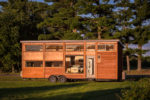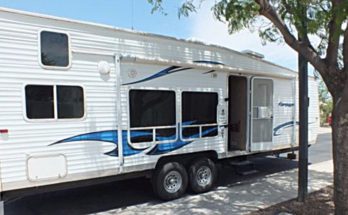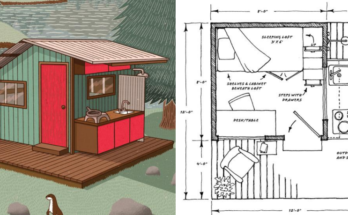CBS national show, Money Watch News, has shared an article on using the tiny house revolution to help solve the homeless crisis in America. America’s homeless number is at an epic high. The amount of homeless women and children continue to rise in the country. There are many organizations trying to come up with a solution to this devastating problem and so far nothing has made a huge impact. In the city of Chicago, tiny houses that range in size from 100 to 400 sq. feet may just be what a big city like Chicago needs to get the homeless off the street. CBS Chicago reported that there are approximately 6000 homeless individuals in the city presently.
A local homeless advocacy group called the Pride Action Tank, took CBS Chicago staff on a tour of a tiny home. The home was the size of a studio apartment in the city with everything a dweller would need to live a comfortable life. The house had a kitchen area, a small bedroom area, full bath, and storage. There are homes this size in big cities that many working people cannot afford. Eithne McMenamin, spokesperson for the Pride Action Tank, stated that the tiny house revolution can help the homeless find affordable housing, though it’s not a complete panacea for the issue. However, McMenamin does feel that this would be another option on the list of options, of which many are not working.
The Tiny House Summit was held in Chicago and it was shown and proven that a tiny house that is filled with every necessity and a few extra amenities, can be built for under $30,000. The Summit wanted to prove that maybe in the future it could be a realistic idea to build a section of tiny homes for the homeless in the city. There are a few issues that the tiny house movement cannot fix. There is a different story from every homeless person that is on the street and many of them do not want the interference. There is mental illness, alcoholism, and rebellion against the current society, that keeps many homeless in the streets and shelters. So we are talking about a small group of homeless people and families that would qualify for this solution.
McMenamin says he just wants to add to the menu of choices and solutions. He does not expect one idea to solve the country’s homeless problem, but it could be one of the choices that will suit some of the homeless population who are homeless due to loss of income, lack of education, and a lack of family support. Utilizing the tiny house movement in this way is a great start. In Philadelphia, there was a project to rid the city of all of its public housing, most of which was not safe, and build simple attractive homes on the same land and offer these homes to those who were willing to look for work. These homes were only made available to people making less than $40,000 per year. The project so far has been a success.












